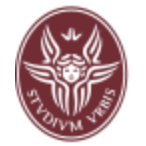Introduction
Sapienza University of Rome, also known as the University of Rome Sapienza, the University of Rome Sapienza, is the largest university in Italy and the third largest in Europe. It is also an international comprehensive research university and performs well in international university rankings.
Overview
Number of students and faculty: In the 2022-2023 academic year, there are 122,000 students, 3,576 professors, 2,320 employees, technicians and librarians, and 1,260 administrative staff in the university hospital.
Campus distribution: There are 7 campuses in total, the main campus is the University of Rome Campus, and there are 5 campuses in the Lazio region and 1 campus in Buenos Aires, the capital of Argentina.
History
Founded: April 20, 1303, founded by Pope Boniface VIII, as a church university when it was founded.
Development: 1431 In 1534, Pope Paul III reorganized the university, granting extensive privileges to masters and students and ordering the establishment of four faculties of law, medicine, philosophy and theology. In 1870, the Kingdom of Italy occupied Rome, the Holy See retreated to Vatican City, and the University of Rome was transformed into a national university in Italy.
School Strength
Faculty: There are many outstanding professors and researchers who have profound academic attainments and rich teaching experience in their respective fields, providing students with high-quality education and guidance.
Teaching Resources: The school has 48 libraries, of which 4 libraries have 24-hour reading rooms, 19 museums, and multiple service offices to provide students with comprehensive support and services.
Institutional Nature
Public research university.
Educational Philosophy
Committed to contributing to the development of the knowledge society through research, excellent education, high-quality education and international cooperation, cultivating students with innovative spirit, critical thinking and social responsibility, and promoting social progress and development.
Key Laboratories and Disciplines
Key Laboratories: The school has a number of advanced laboratories and research centers covering physics, chemistry, biology, medicine, engineering and other fields, providing good research conditions and platforms for scientific researchers.
Advantageous disciplines: It has significant advantages in the fields of classics and ancient history, archaeology, physics, aerospace engineering, philosophy, theology, etc. In the 2024 QS World University Rankings by Subject, 21 disciplines are among the top 100 in the world, 8 disciplines are among the top 50 in the world, classics and ancient history are ranked first in the world, archaeology is ranked 10th, physics is ranked 41st, linguistics is ranked 55th, and dentistry is ranked 61st.
Department
The school has 11 colleges, 1 Institute of Advanced Studies, 1 Institute of Aerospace Engineering, 57 departments, and numerous research and service centers.
Ranking
In the QS World University Rankings, the University of Rome ranks at the forefront, and its graduate employability ranking entered the top 100 in 2018.
In the 2022 and 2023 Academic Rankings of World Universities by Soft Science, it was rated as the best university in Italy.
In the 2018, 2019, 2021 and 2022 QS World University Rankings by Subject, Classics and Ancient History ranked 1st in the world.
Fees
Students with 100 credits in Italian high school are exempt from registration fees, and this discount can be renewed if their grades remain good.
Families with multiple children attending the school can enjoy sibling discounts.
Students with an ISEE of no more than 24,000 euros can enroll for free, and students with an ISEE of no more than 40,000 euros can enjoy fee reductions.
Campus Environment
Main campus: Located in the university city in the center of Rome, it has convenient transportation and complete surrounding facilities. The campus has a variety of architectural styles, including sculptures with a long history and simple shapes, buildings with a strong religious atmosphere, and modern teaching buildings with smooth lines and simple shapes.
Life facilities: There are many restaurants on campus, providing meals and drinks of various flavors to meet the different dietary needs of students. In addition, the school also has a sports center with more than 100,000 square meters of facilities for students to carry out various sports activities, as well as cultural and art groups such as orchestras and choirs to enrich students' extracurricular life.
-
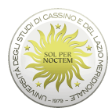
University of Cassino and Southern Lazio
-

University of Campania Luigi Vanvitelli
-
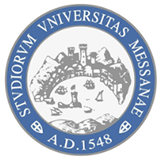
University of Messina
-
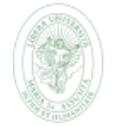
Libera Universita degli Studi Maria SS. Assunta di Roma (LUMSA)
-
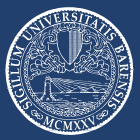
University of Bari Aldo Moro
-
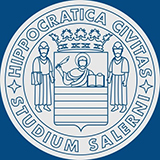
University of Salerno
-
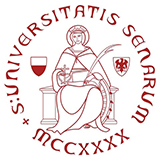
University of Siena
-
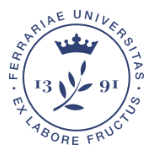
University of Ferrara
-
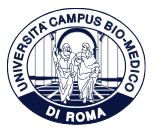
Campus Bio-Medico University of Rome
-
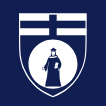
University of Genoa
-

Mesoamerican University
-

Istmo University
-

Mariano Galvez University of Guatemala
-

Regional University of Guatemala
-

Galileo University
-

Francisco Marroquín University
-

Rafael Landívar University
-

University of the Valley of Guatemala
-

University of San Carlos of Guatemala
-

Technological Institute of Tlaxcala Plateau
-

Golfo University
-

Technological University of South Sonora
-

Technological University of Huejotzingo
-

Tizimín Institute of Technology
-

Chilpancingo Institute of Technology

